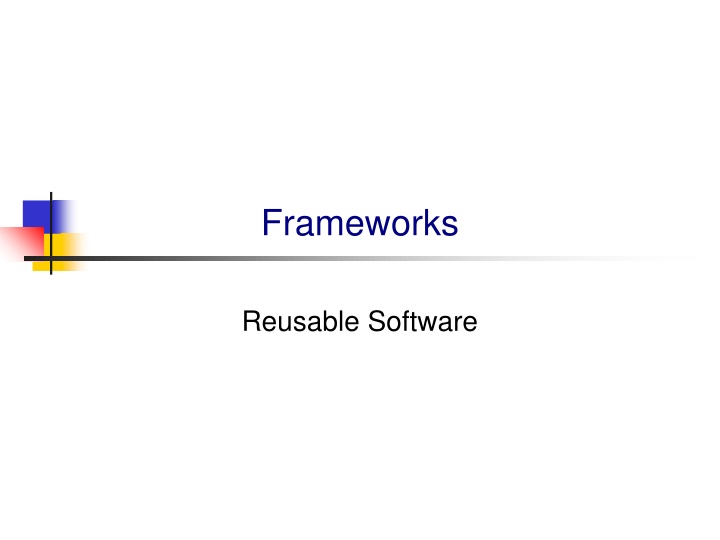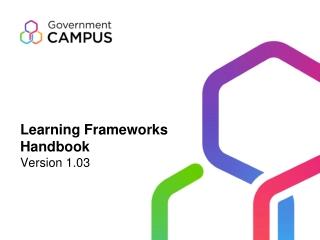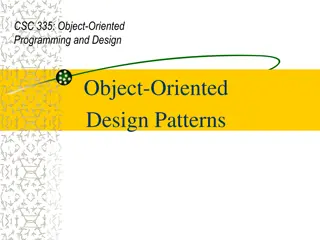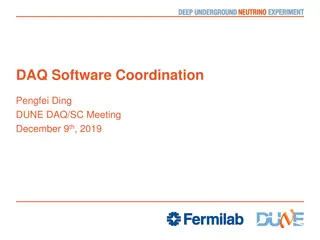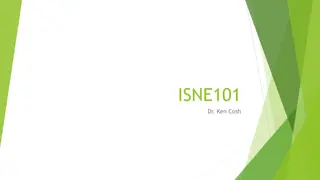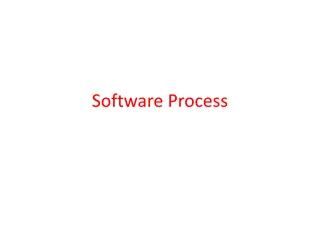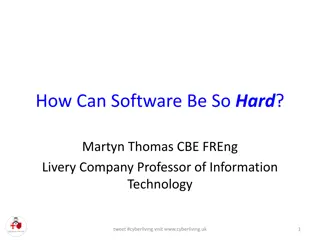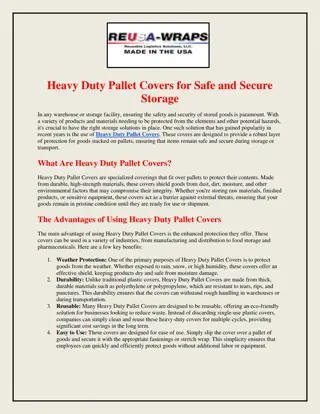Frameworks: Reusable Software for Efficient Development
Frameworks are reusable application environments that enable modification by adding custom code without altering the framework itself. They offer a reusable architecture for various functionalities like request mapping, session management, and database access. Explore examples such as Java Collections Framework and Web Frameworks, which streamline development by leveraging existing logic and interfaces. Learn about slots, required customizations, and the Object Client-Server Framework's structure. Discover how frameworks facilitate code reuse and architecture reuse, providing a foundation for efficient TCP client-server applications in languages like Java.
Download Presentation

Please find below an Image/Link to download the presentation.
The content on the website is provided AS IS for your information and personal use only. It may not be sold, licensed, or shared on other websites without obtaining consent from the author.If you encounter any issues during the download, it is possible that the publisher has removed the file from their server.
You are allowed to download the files provided on this website for personal or commercial use, subject to the condition that they are used lawfully. All files are the property of their respective owners.
The content on the website is provided AS IS for your information and personal use only. It may not be sold, licensed, or shared on other websites without obtaining consent from the author.
E N D
Presentation Transcript
Frameworks Reusable Software
Frameworks are ... a reusable application or environment that can be modified by adding (your) application-specific code, without modifying the framework code. frameworks provide a reusable architecture, not just reusable code.
Examples Java Collections Framework use it to create custom collections that reuse the base collections logic and interfaces Web Frameworks provide logic and architecture for request mapping, session management, database access, and more. Spring Framework, Play (Java) Django (Python) Rails (Ruby) Symphony, CakePHP, Lavarel (PHP) JUnit Testing Framework
"Slots": Required Customization Frameworks often require you to add some code before they can be used. These methods are called slots. Slot can be a class or a method.
Object Client-Server Framework OCSF is a TCP-based client-server framework. Client Side: connect to server send messages to server receive message from server handle connect & disconnect events Server Side: manage connections to clients receive messages from clients send messages to clients
OCSF Network
"slots" are usually callbacks A callback is a method in your code that the framework invokes. You start the framework, then it calls you back when an event occurs. This is also called inversion of control: You start the framework, then the framework takes control. In OCSF, the required callbacks (slots) are: Client: handleMessageFromServer Server: handleMessageFromClient That's it! You can write a network client-server application just by writing 2 methods.
Code Reuse, Architecture Reuse OCSF provides the architecture and code for a TCP client-server application. You can use the framework without knowing how it works (or how TCP works). but you should study OCSF to learn how to use networking in Java. You can modify and extend the framework by overriding callbacks (slots and hooks).
OCSF AbstractClient <<controls>> (commands to the framework) openConnection( ) sendToServer( Object ) closeConnection() <<hooks>> (optional callbacks) connectionEstablished( ) connectionClosed( ) connectionException( ) <<slot>> (required callbacks) handleMessageFromServer(Object) {abstract} <<accessors & mutators>> isConnected() getPort( ), setPort(port) getHost( ), setHost(server)
OCSF AbstractServer <<controls>> (commands to the framework) listen( ) stopListening( ) sendToAllClients(Object msg) <<hooks>> (optional callbacks) clientConnected( ) clientDisconnected( ) several others <<slot>> (required callbacks) handleMessageFromClient(Object) {abstract} <<accessors & mutators>> isListening() getClientConnection(int id) getPort( ), setPort(port)
How to Use a Framework? In OCSF you create a subclass and define the required abstract methods. You may override: hook methods You may call (but don't override): controls, queries, mutator methods Some other frameworks use dependency injection instead.
Example A messaging client that sends strings (message). All clients receive the message. Use port 5555 (port > 1024 is suggested for Linux and MacOS).
Client side Extend AbstractClient & implement the callback method import com.lloseng.ocsf.client.AbstractClient; public class ChatClient extends AbstractClient { public ChatClient(String host, int port) { super(host, port); } msg) { } @Override protected void handleMessageFromServer(Object } System.out.println("> " + msg);
Run the client 1) Create a client with server (host) name and server port. 2) Connect to the server. 3) In a loop... 1) wait for user to type a message 2) send message to server TODO: provide a way to quit
Server Side: an Echo Server Create a server that just echoes messages to all client. Extend AbstractServer. Override the "slot" method. public class EchoServer extends AbstractServer { /** create a new echo server */ public EchoServer(int port) { super(port); } Object msg, ConnectionToClient client) { @Override protected void handleMessageFromClient( } super.sendToAllClients(msg);
Running the Server private static final int PORT = 5555; public static void main(String[] args) { EchoServer server = new EchoServer(PORT); try { server.listen(); System.out.printf("Listening on port %d\n", PORT); } catch (IOException e) { System.out.println("Couldn't start server:"); System.out.println(e); } }
Using Hooks Server: print a message when a client connects or disconn. Client: print a message if server closes the connection. What hooks (callbacks) can we should use to do this?
How OCSF Works You don't know how a framework works in order to use it. This is the advantage of a framework; it provides an abstraction for what you want to do. Think "value added" don't waste time re-inventing logic and architecture that has been done already.
TCP is Connection Oriented In TCP, a server listens for connections on a port number. A client connects using server's IP address and port number. Either side can send messages. A server can accept many connections on the same port. When a client connects, the server creates a new thread to handle communication with one client.
The Client Side AbstractClient must be subclassed Any subclass must provide an implementation for handleMessageFromServer Takes appropriate action when a message is received from a server Implements the Runnable interface Has a runmethod which Contains a loop that executes for the lifetime of the thread
The public interface of AbstractClient Control methods (you can call these, but don't override) openConnection closeConnection sendToServer Status and Accessor/Mutator isConnected getHost setHost getPort setPort getInetAddress
Callback methods of AbstractClient Callbacks that may be overridden: connectionEstablished connectionClosed Callback that must be implemented: handleMessageFromServer
References Object Client-Server Framework http://www.site.uottawa.ca/school/research/lloseng/supportMaterial/o csf/ocsf.html (OCSF is in chapter 3 and chapter 6) Youtube lecture by one of the authors of OCSF: https://www.youtube.com/watch?v=hGM1eT8EVuI XMPP - another messaging framework with many applications. https://xmpp.org/ Smack - Java XMPP client library
